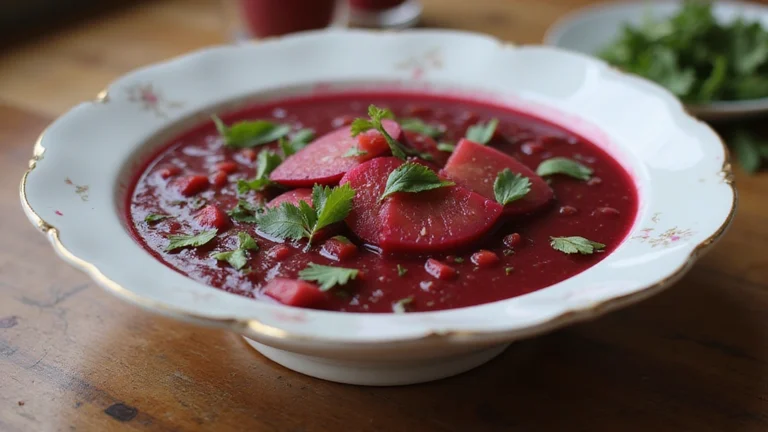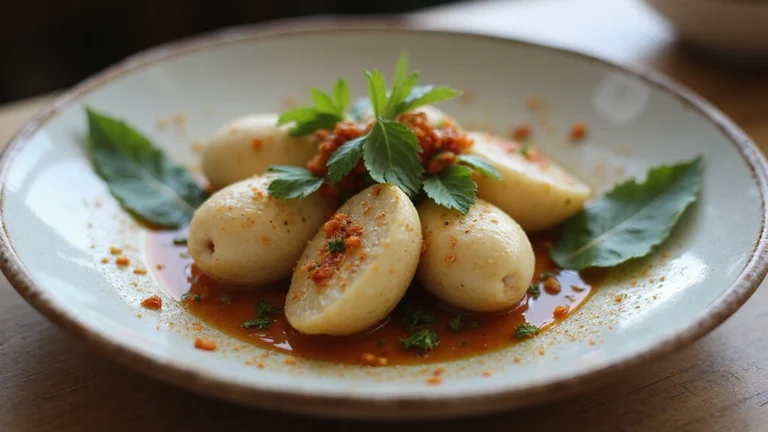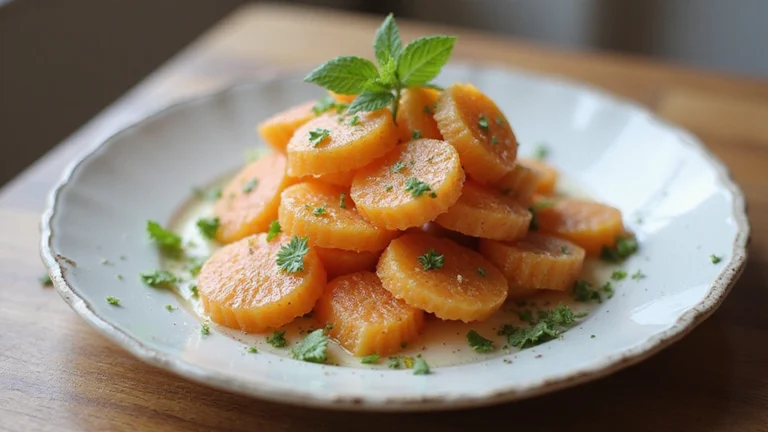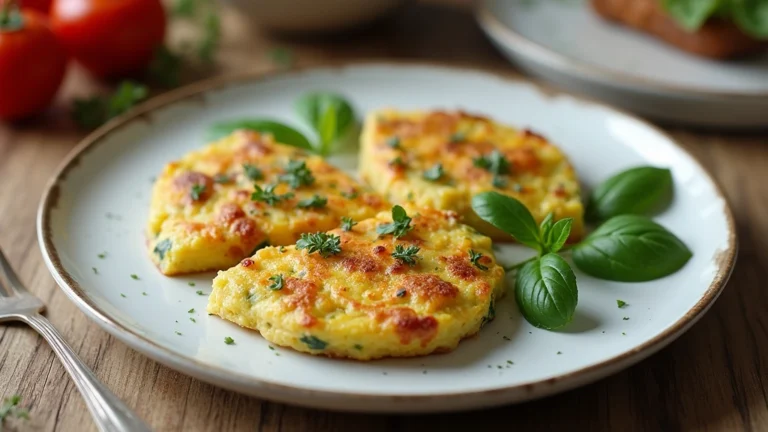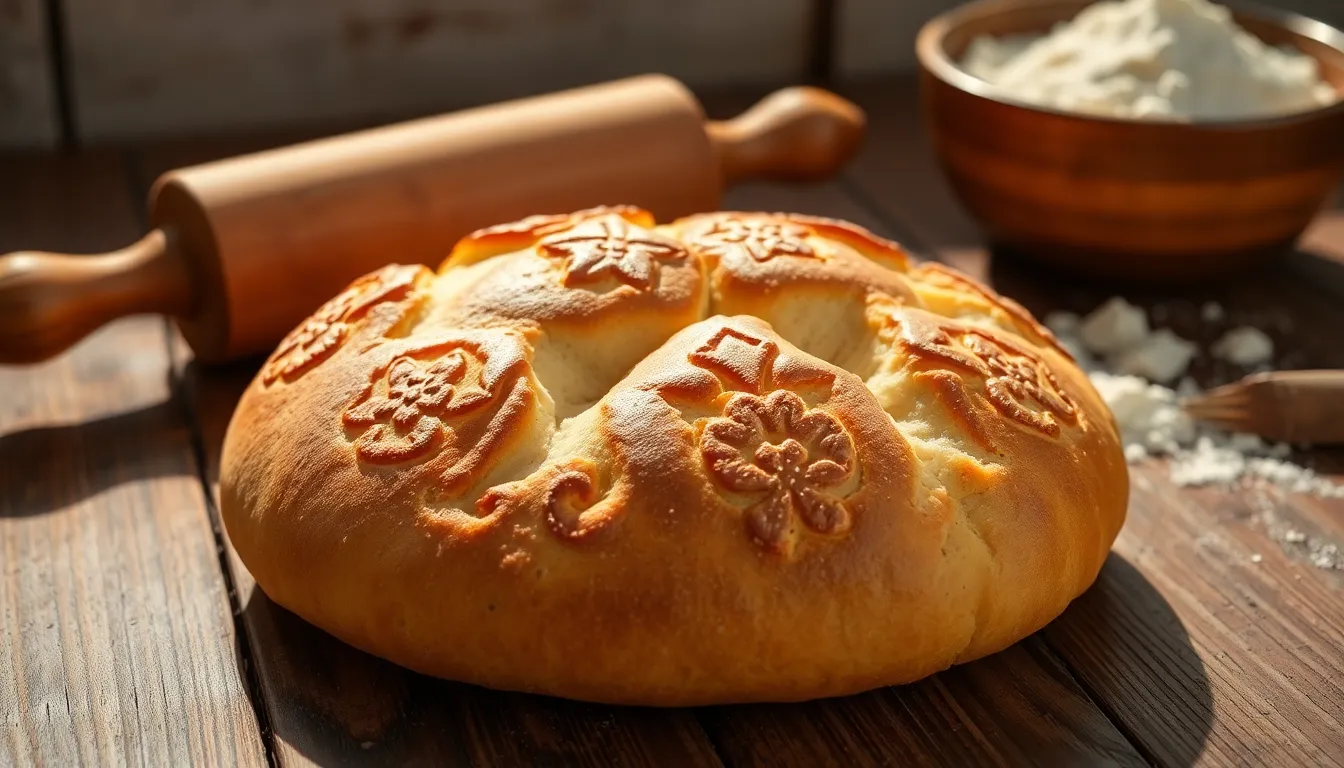
Ever wondered how to make authentic pogača? This traditional Eastern European bread is about to become your new favorite comfort food. Keep reading to discover this simple yet irresistible recipe.
Pogača (pronounced poh-GAH-cha) is a beloved staple in Balkan and Eastern European cuisine. This hearty, round bread features a golden crust and soft, fluffy interior that’s perfect for sopping up stews or enjoying with cheese and cured meats. Whether you’re connecting with your cultural roots or exploring new culinary territories, this traditional bread brings warmth to any table.
You’ll love how versatile pogača can be. While the classic version relies on simple ingredients, regional variations might include cheese, herbs, or even potatoes mixed into the dough. This recipe keeps things authentic with just the right amount of salt and a brush of egg wash for that characteristic golden shine that makes pogača instantly recognizable at gatherings across Croatia, Serbia, Bulgaria, and beyond.
What Is Pogača?
Pogača (pronounced po-GA-cha) is a traditional Eastern European bread that holds a special place in Balkan cuisine. This hearty bread features a beautiful golden crust with a soft pillowy interior that makes it irresistible when served warm. The name derives from the Latin word “panis focacius” which means bread baked on the hearth – highlighting its ancient origins and rustic nature.
Unlike typical sandwich bread pogača has a distinctive round shape and is often scored on top with decorative patterns before baking. The basic dough consists of flour water salt and yeast though many regional variations incorporate additional ingredients that reflect local tastes and available resources.
Throughout the Balkans you’ll find different interpretations of this beloved bread. Serbian pogača often includes yogurt for tanginess while Croatian versions might incorporate cheese or potatoes for added richness. Bulgarian pogača sometimes features feta cheese and herbs stuffed inside the dough creating pockets of flavor.
What makes pogača truly special is its role in cultural traditions. In many Balkan households it symbolizes hospitality and is commonly served to welcome guests. During celebrations and family gatherings pogača frequently takes center stage with some traditions involving breaking the bread by hand rather than cutting it with a knife to symbolize unity and sharing.
The texture sets pogača apart from other breads – it’s denser than a typical loaf yet tender with a satisfying chew. When baked properly the outside develops a crisp crust while the interior remains moist and fluffy creating a perfect contrast with each bite.
The History Of This Beloved Eastern European Bread
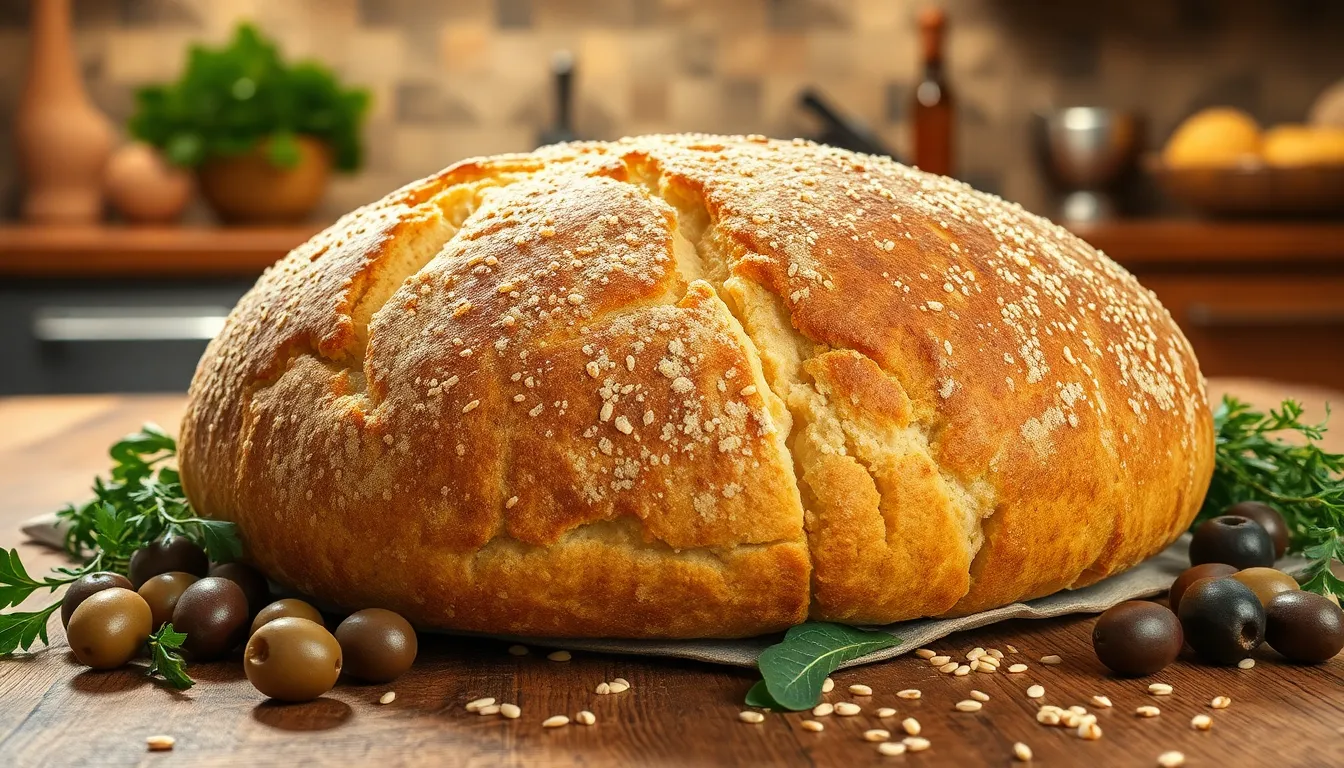
Origins and Etymology
Pogača boasts a fascinating history dating back centuries with roots deeply embedded in Eastern European culture. The name itself reveals much about its heritage deriving from the Latin panis focacius which literally translates to “bread baked on the hearth or fireplace.” This etymology perfectly captures the traditional baking method where the bread was placed directly in the ashes or on a hot hearth before modern ovens existed. The term traveled through Byzantine Greek (πογάτσα) before establishing itself in South Slavic languages as pogača or погача maintaining its connection to ancient baking traditions.
Regional Spread and Cultural Significance
This rustic bread has transcended borders throughout the Balkans and neighboring regions appearing in countless local cuisines each with its own distinct twist. You’ll find pogača beloved across Slovenia Croatia Serbia Bosnia and Herzegovina Montenegro North Macedonia and Kosovo. Its popularity extends beyond the Balkans into Turkey Hungary and parts of the Levant where it goes by slightly different names: poğaça in Turkish pogácsa in Hungarian and pagáče in Slovak.
Traditional Variations
Pogača typically features a round flatbread shape but appears in both leavened and unleavened forms. The unleavened versions present more challenges to master requiring particular skill and technique. While wheat flour serves as the primary ingredient bakers often incorporate barley or rye for distinctive flavors and textures. Regional variations include:
- Plain versions seasoned simply with salt
- Stuffed varieties containing potatoes ground meat olives or cheese
- Herb-infused doughs featuring local seasonings
- Seed-topped breads adorned with sesame nigella or dill
Cultural Importance
In Slovenia the Belokranjska pogača from the White Carniola region has achieved such cultural significance that it now enjoys EU protection as a specialty food. This light salty flatbread represents the ultimate symbol of hospitality traditionally baked to welcome guests into homes. Its cultural importance runs so deep that references to this bread appear in local folk songs and it remains a breakfast staple for many families.
Throughout the Balkans pogača transcends mere sustenance to become a symbol of community and celebration. Special varieties accompany important festivals such as the Green George Festival and Christmas celebrations where distinctive versions like česnica or flower-shaped pogača take center stage. The tradition of breaking and sharing this bread connects generations strengthening family bonds and preserving cultural heritage through its simple yet profound presence at the table.
Key Ingredients For Traditional Pogača

Creating authentic pogača requires exact ingredients that contribute to its distinctive texture and flavor. The following components form the foundation of this beloved Balkan and Turkish bread.
Salt And Flour Options
All-purpose or bread flour serves as the primary ingredient in pogača, with recipes calling for anywhere between 400g to 925g depending on the desired batch size. Salt plays a crucial role in improving the bread’s flavor profile, typically added at a ratio of 1 teaspoon to 1 tablespoon per batch. Traditional recipes rely on yeast for leavening, but many Balkan variations incorporate baking powder and baking soda instead, offering a quicker preparation time without sacrificing the characteristic rise. You’ll find the texture varies slightly based on your flour choice, with bread flour producing a chewier consistency while all-purpose flour yields a softer crumb.
Dairy Components
Dairy ingredients contribute significantly to pogača’s soft, tender texture. Milk appears in most recipes, requiring between 300ml to 600ml of lukewarm or cold milk depending on the flour quantity. Yogurt represents another key dairy element, particularly in yeast-free Balkan versions, providing both moisture and a subtle tangy flavor that balances the bread’s richness. Butter features prominently in many regional variations, especially in Bosnian and Turkish pogača, where it enriches the dough or creates delicious pockets of flavor when used as a filling. The combination of these dairy elements results in pogača’s characteristic tenderness that distinguishes it from other breads.
Fat Choices
Fats provide essential richness and help create pogača’s distinctive texture. Butter stands as the traditional fat of choice, often melted before being incorporated into the dough or used as a flavorful spread between layers. Olive oil or vegetable oil appears in many recipes as an alternative to butter, either mixed directly into the dough or used to grease the baking pans. You might notice regional preferences in fat selection, with Mediterranean-influenced versions favoring olive oil while continental variations tend toward butter. These fats not only enhance flavor but also contribute to the bread’s golden crust and moist interior that makes pogača so irresistible when served fresh from the oven.
Tools You’ll Need

Preparing authentic pogača requires some basic baking equipment that most home cooks already have on hand. The traditional method used a sač or peka (a bell-shaped lid buried in ashes), but modern kitchen tools work perfectly for today’s home bakers.
- Large mixing bowl for combining your dough ingredients
- Measuring cups and spoons for accurate ingredient portions
- Kitchen scale (optional but helpful for precise flour measurement)
- Wooden spoon or stand mixer with dough hook attachment
- Clean surface for kneading the dough
- Round baking pan (9-10 inches/23-25cm) or cast iron skillet
- Pastry brush for applying egg wash
- Sharp knife or kitchen scissors for scoring decorative patterns
- Clean kitchen towel for covering the dough while rising
- Cooling rack for your freshly baked pogača
For the most authentic experience, consider using a cast iron skillet which mimics the traditional cooking vessel’s heat retention properties. The heavy bottom creates that characteristic golden crust while ensuring even heat distribution throughout the baking process.
If you plan to make stuffed pogača variations, you might also need a rolling pin to flatten portions of dough before adding fillings. A fork comes in handy for creating decorative patterns on the top, especially for Serbian and Bosnian variations that feature distinctive pricked surfaces.
Remember that pogača is traditionally broken by hand rather than cut with a knife—”pogača se ne seče nego se lomi rukama“—so you won’t need a bread knife for serving this communal bread that symbolizes unity and sharing in Balkan culture.
Ingredients
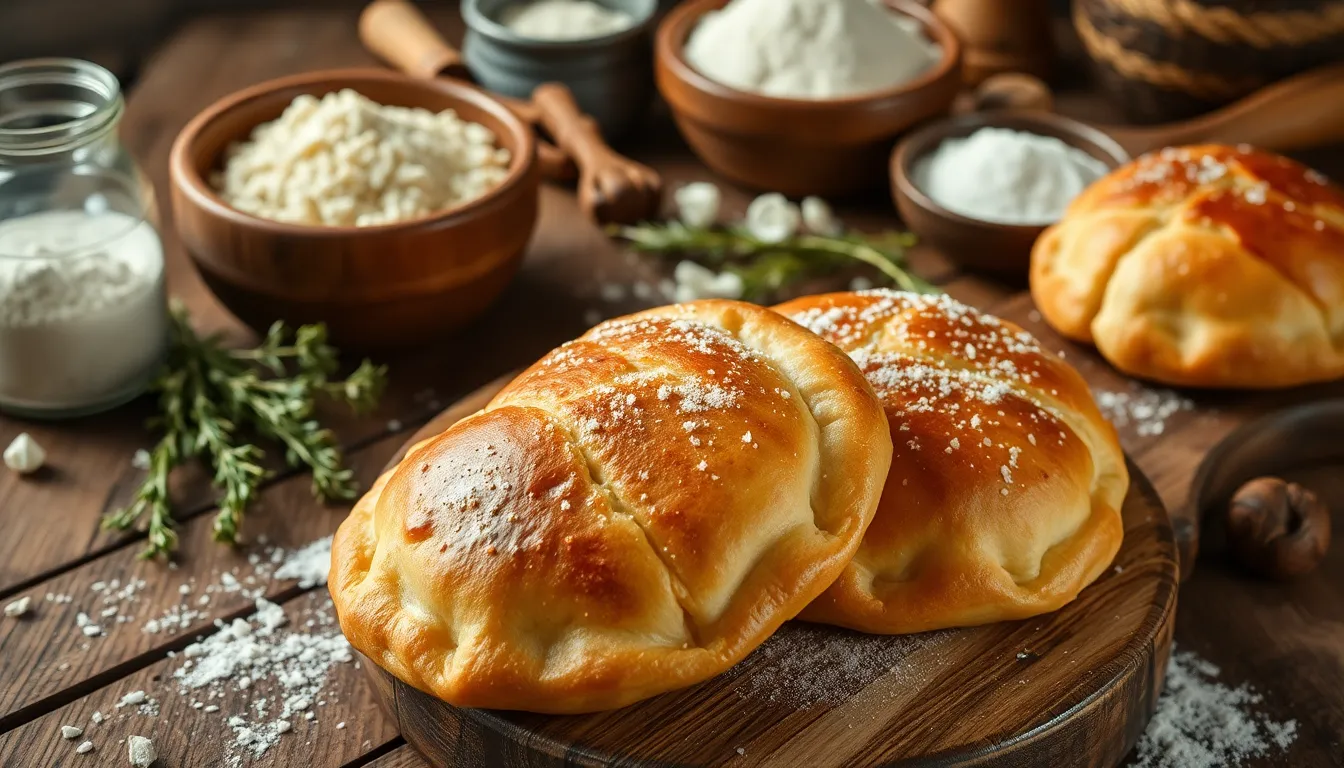
Creating authentic pogača requires simple yet exact ingredients that contribute to its characteristic texture and flavor. Below you’ll find recipes for both traditional variations: the quick yeast-free version made with yogurt and the classic yeast-based pogača popular throughout the Balkans and Turkey.
Yeast-Free Balkan-style Pogača (Yogurt-based)
- 18-20 oz white flour
- ½ tbsp baking powder
- ½ tsp baking soda
- 1 tsp salt
- 1 egg
- 7 oz plain yogurt
- 3.5 oz milk
- Oil for greasing the pan
Yeast-based Pogača (Serbian, Croatian, Turkish)
- 3¼ cups (400g) bread or all-purpose flour
- 2¼ tsp dry yeast
- ½ tbsp sugar
- 1 tsp salt
- 320 ml tepid water or warm milk
- 1 egg (plus additional for brushing)
- 2-3 tbsp vegetable oil, sunflower oil, or melted butter
- Optional: 1 tsp vinegar or honey (Serbian variant)
- Optional: semolina flour for shaping (Croatian style)
Traditional Fillings (Turkish Style)
- 1 cup crumbled feta cheese or other cheeses (kashar, mozzarella, halloumi, cheddar)
- ¼ cup chopped fresh herbs (parsley, dill, mint, or oregano)
- 1 egg white to mix into filling
- 1 egg yolk for brushing the dough surface
The beauty of pogača lies in its adaptability. Many regional variations exist, with families often passing down their own special recipes through generations. While flour forms the foundation of every pogača recipe, the addition of yogurt in the yeast-free version creates a tender crumb, while the yeast-based variants develop a more complex flavor during rising. Turkish versions frequently incorporate delicious fillings sealed within individually shaped portions, making them perfect for sharing at gatherings.
How To Make Pogača

Creating this traditional Balkan and Turkish bread at home requires attention to detail but rewards you with a delicious homemade treat. Follow these step-by-step instructions to master the art of pogača baking.
Preparing The Dough
For an authentic pogača dough you’ll need to choose between two main preparation methods. Traditional yeast-based dough begins by dissolving active dry yeast and a pinch of sugar in warm milk then letting it froth for 10-15 minutes before combining with flour and other ingredients. Alternatively you can make a quicker yeast-free version by mixing dry ingredients (flour baking powder baking soda and salt) then incorporating wet components like eggs milk and yogurt. Your dough should develop into a soft yet non-sticky consistency that holds together well. The liquid ingredients contribute to the tender crumb that makes pogača so beloved throughout the Balkans.
Kneading Techniques
Start combining your ingredients with a wooden spoon or spatula until the mixture begins to form a cohesive mass. Transfer to a lightly floured surface and knead continuously for 7-10 minutes until the dough becomes smooth and elastic. You’ll know your dough has reached the right consistency when it feels soft and pliable but doesn’t stick to your hands. Properly kneaded dough should spring back slightly when poked with a finger. For yeast-based versions place the kneaded dough in an oiled bowl covered with a clean kitchen towel and allow it to rise in a warm spot for 1-2 hours until doubled in size.
Shaping Your Pogača
Once your dough is properly kneaded or has completed its rise transfer it to a greased round baking pan approximately 9 inches (23 cm) in diameter. Use your fingertips and palm to gently flatten and spread the dough evenly across the pan. The traditional round shape is essential to authentic pogača and helps ensure even baking throughout. For filled variations you might layer the dough with cheese herbs or other traditional fillings before shaping. Press the dough firmly into the pan to eliminate air pockets while maintaining its soft texture.
Scoring And Decorating The Top
Use a fork to prick the surface of your pogača multiple times allowing steam to escape during baking and preventing uneven puffing. Many traditional recipes call for decorative patterns scored into the top using a sharp knife or kitchen scissors. These patterns not only add visual appeal but also create textural contrast in the finished bread. Brush the surface with an egg wash for a glossy golden finish or melted butter for added richness and flavor. Traditional pogača often features distinctive crosshatch or diamond patterns that make it immediately recognizable at the table.
Baking To Perfection
Preheat your oven to a high temperature (approximately 495°F/250°C) then reduce to 400°F/200°C once you place the pogača inside. Bake for 35-40 minutes rotating the pan halfway through to ensure even browning. Monitor the top carefully as it can brown quickly; cover with aluminum foil if it darkens too rapidly. Your pogača is done when the crust turns a beautiful golden brown and sounds hollow when tapped on the bottom. After removing from the oven wrap the hot bread in a clean kitchen towel and let it cool for 35-40 minutes this traditional cooling method keeps the crust soft while maintaining moisture in the interior.
| Baking Stage | Temperature | Duration | Action |
|---|---|---|---|
| Initial heat | 495°F/250°C | Preheating only | Prepare oven |
| Baking | 400°F/200°C | 35-40 minutes | Rotate pan halfway |
| Cooling | Room temp | 35-40 minutes | Wrap in kitchen towel |
Variations Of Pogača

Across the Balkan region, pogača appears in many delicious forms that reflect local tastes and traditions. These regional adaptations showcase the bread’s versatility while maintaining its cultural significance as a symbol of hospitality and community.
Cheese-Filled Pogača
Cheese-filled pogača transforms the traditional bread into a savory delight that captivates taste buds with its creamy interior. Local cheeses like feta or white brine cheese are incorporated either by mixing directly into the dough or creating pockets of flavor within. You’ll find this variation in many Balkan households where families often use their regional cheese varieties to create a unique signature taste. The cheese melts slightly during baking, creating pockets of tangy goodness that contrast beautifully with the bread’s soft texture. This version makes an excellent accompaniment to meals or stands alone as a satisfying snack that showcases the rich dairy traditions of the region.
Potato Pogača
Potato pogača offers a wonderfully moist texture that distinguishes it from other variations of this beloved bread. Mashed or grated potatoes incorporated into the dough create a remarkably soft and fluffy interior that stays fresh longer than traditional versions. You can enhance the flavor profile by adding various herbs or spices that complement the subtle earthiness of the potatoes. The addition of potatoes also gives the bread a slightly yellow hue and creates a tender crumb structure that holds together beautifully when pulled apart. This hearty variation proves especially popular during colder months when its substantial texture provides both comfort and sustenance.
Herb And Garlic Pogača
Herb and garlic pogača infuses the traditional bread with aromatic elements that elevate its flavor profile to new heights. Fresh herbs such as dill, parsley, or rosemary mixed into the dough create a fragrant base that perfumes the entire loaf. Garlic adds a pungent note that mellows during baking yet remains distinctly present in every bite. Many bakers finish this variation by sprinkling sesame or nigella seeds across the top before baking, adding both visual appeal and a nutty texture that complements the herbal notes. The exterior develops a beautiful golden crust while the interior remains soft and aromatic, making this version particularly popular for serving alongside grilled meats or hearty stews. Families often develop their own signature herb combinations that become treasured recipes passed through generations.
Serving Suggestions

Pogača shines brightest when served warm straight from the oven allowing you to fully appreciate its soft texture and aromatic qualities. This versatile bread adapts beautifully to various serving styles across Balkan and Turkish traditions.
As a Breakfast Staple
Start your day with pogača as part of a traditional Turkish breakfast spread. Pair this fluffy bread with a steaming cup of Turkish tea alongside complementary items like simit sesame rings cheese tomatoes cucumbers olives and jam. For a more substantial morning meal try serving pogača with spinach borek menemen (scrambled eggs with tomatoes) or sucuklu yumurta (eggs with Turkish sausage).
Perfect Portable Snack
Take pogača on your outdoor adventures as it requires no utensils and travels exceptionally well. Its compact form makes it ideal for hikes picnics and road trips when you need a satisfying hand-held food option. The sturdy texture helps it maintain its shape while on the go allowing you to enjoy this traditional bread wherever your adventures take you.
Afternoon Tea Companion
Transform your afternoon break with pogača served alongside a variety of savory accompaniments. Create a spread featuring black and green olives patates salatasi (potato salad) kisir (bulgur salad) cheese plates and assorted nuts. This combination provides a satisfying light meal that bridges the gap between lunch and dinner perfectly.
Beverage Pairings
Enhance your pogača experience by pairing it with traditional drinks that complement its flavors:
- Turkish tea (black tea served hot)
- Ayran (refreshing yogurt-based drink)
- Turkish coffee for a stronger flavor contrast
- Fruit juices for a sweeter pairing option
Storage and Reheating Tips
Maintain the freshness of your pogača with proper storage techniques. Keep it at room temperature in an airtight container for up to two days or refrigerate for extended freshness up to five days. For longer preservation freeze your pogača for up to three months preferably on the same day it’s baked.
Restore that fresh-baked quality by reheating pogača in a preheated oven at 50°C (120°F) for about 10 minutes. When working with frozen pogača you can either thaw it for 15 minutes before reheating or place it directly in the oven for 10-12 minutes until thoroughly warmed.
The temperature guidelines for reheating ensure your pogača retains its delightful texture without becoming dry or tough. This gentle warming process revitalizes the bread making it almost as delicious as when first baked.
Storage And Reheating Tips
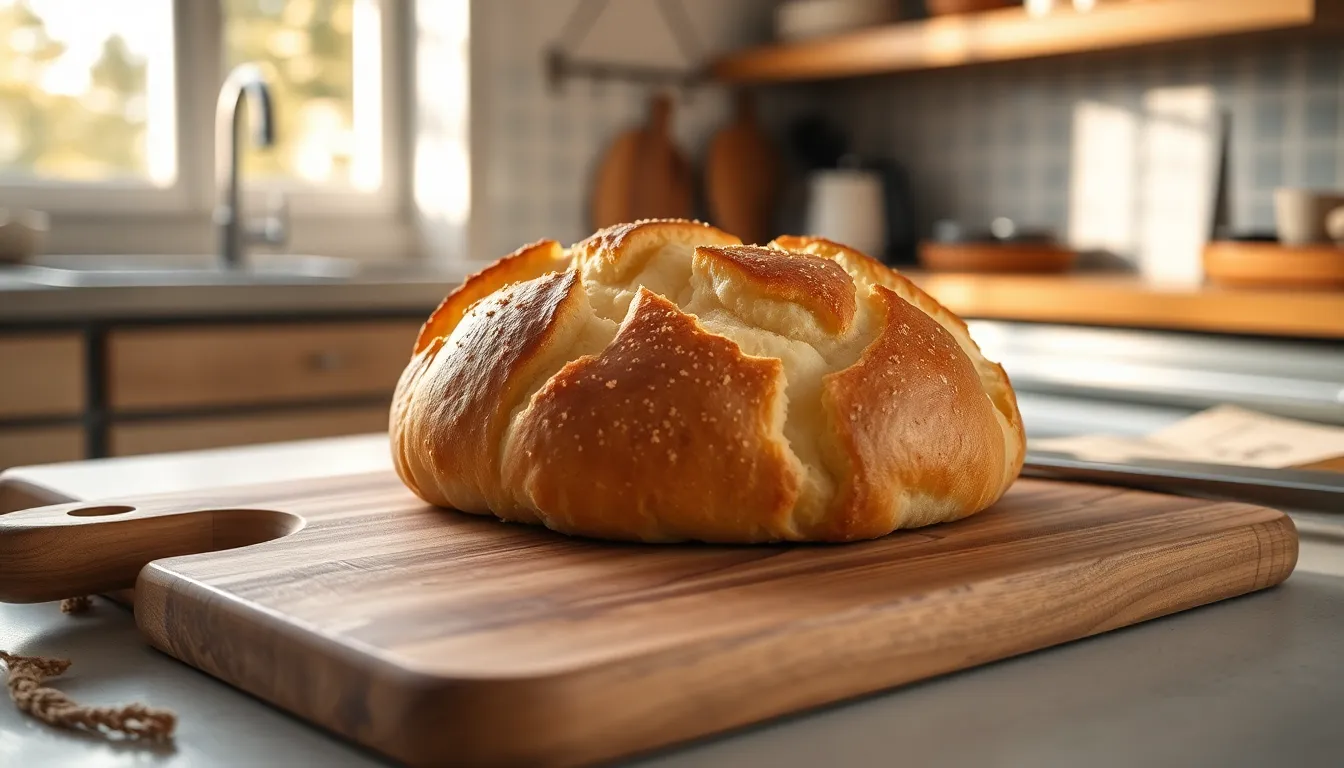
Properly storing and reheating your pogača ensures you can enjoy this delicious Balkan bread for days after baking. Follow these expert recommendations to maintain its signature texture and flavor.
Room Temperature Storage
For short-term storage up to 2 days keep your freshly baked pogača in an airtight container or sealed plastic bag at room temperature. This method preserves the bread’s softness and prevents it from drying out while maintaining its authentic taste.
Refrigeration
When you need to store pogača longer place it in the refrigerator where it will remain good for up to 5 days. Remember that refrigeration slows spoilage but might slightly affect the bread’s moisture level. Wrap your pogača tightly in plastic wrap or place it in a sealed container before refrigerating.
Freezing Considerations
While freezing isn’t ideal for preserving pogača’s texture sometimes it becomes necessary. If you must freeze your bread wrap individual portions tightly in plastic wrap followed by aluminum foil or place them in freezer-safe bags. Allow frozen pogača to thaw completely at room temperature before reheating.
Oven Reheating Method
The oven delivers superior results when reheating pogača:
- Preheat your oven to 325°F (163°C)
- Place pogača on a baking sheet
- Warm for 5-10 minutes until heated through
- This method restores the crisp exterior while maintaining the soft interior
Quick Microwave Option
For those moments when you need pogača warmed quickly:
- Place a portion on a microwave-safe plate
- Heat for approximately 10 seconds
- Check and add additional 5-second intervals if needed
Microwaving softens pogača rapidly but may sacrifice some of the desirable crust crispness.
Alternative Reheating Methods
Your air fryer or grill can effectively refresh pogača:
- Set air fryer to approximately 160°F (71°C)
- Heat for 2-3 minutes until warmed through
- Monitor closely to prevent over-crisping
For optimal results always allow refrigerated pogača to sit at room temperature for a few minutes before reheating. This simple step ensures even warming and prevents unwanted sogginess in your treasured Balkan bread.
My Family’s Traditional Pogača Recipe
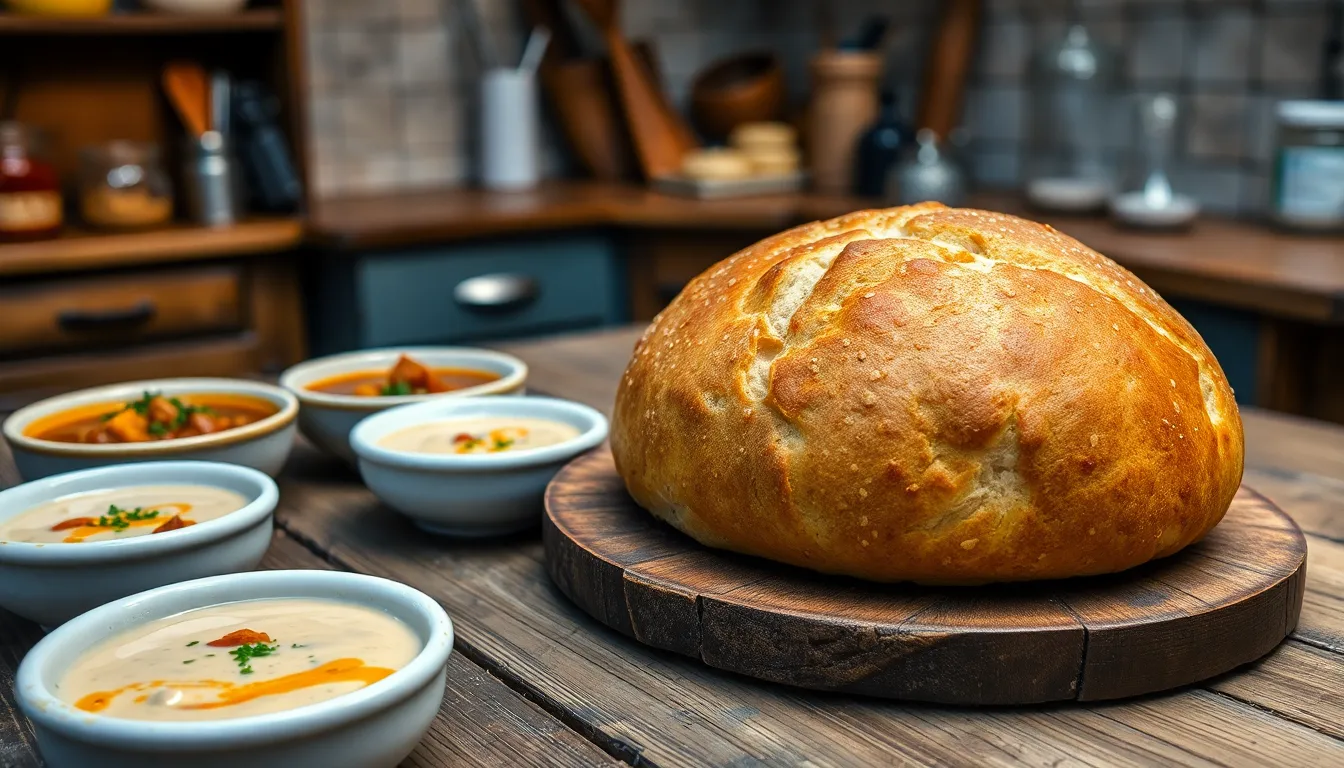
This recipe has been passed down through generations in my Balkan family. The resulting bread features a perfectly golden crust with a tender interior that makes it irresistible when served warm.
Ingredients
- 6 cups all-purpose flour
- 3 tablespoons unsalted butter
- 3 eggs plus 1 additional egg for egg wash
- 3 teaspoons instant yeast
- 600 ml lukewarm milk
- 1 tablespoon salt
- 1 teaspoon sugar
- Optional: sesame seeds for topping
Instructions
- Prepare the base mixture by combining the flour with salt sugar and instant yeast in a large mixing bowl. Whisk these dry ingredients together to ensure even distribution.
- Create the wet mixture by beating 3 eggs in a separate bowl until well combined. Heat the milk until lukewarm (not hot) as proper temperature helps activate the yeast without killing it.
- Form the dough by making a well in the center of your flour mixture and pouring in the beaten eggs and lukewarm milk. Stir with a wooden spoon until the mixture begins to come together.
- Incorporate the butter by adding it in small pieces to the dough. The butter should be soft but not melted for easier integration into the dough.
- Knead thoroughly for about 8-10 minutes until the dough becomes smooth elastic and pulls away from the sides of the bowl. The texture should feel soft and slightly tacky but not sticky.
- First rise – Place the dough in a lightly oiled bowl cover with a clean kitchen towel and let it rise in a warm spot for approximately 2 hours or until doubled in size.
- Shape your pogača by gently deflating the risen dough and forming it into a round loaf. Transfer to a greased round baking pan about 10-12 inches in diameter.
- Second rise – Allow the shaped dough to rest for an additional 30 minutes while you preheat your oven to 400°F (200°C).
- Prepare for baking by beating the remaining egg and brushing it generously over the top of the dough. This creates the characteristic golden crust. Sprinkle with sesame seeds if desired.
- Bake the pogača for 30-40 minutes or until the top turns a beautiful golden brown and the bread sounds hollow when tapped on the bottom.
- Finish properly by removing from the oven and immediately wrapping in a clean kitchen towel. This traditional step keeps the crust from becoming too hard and allows the bread to cool slightly while retaining moisture.
Serving Tips
Serve your family pogača while still warm with a spread of kajmak (Balkan clotted cream) or alongside hearty stews and soups. The bread tastes best when torn by hand rather than sliced creating natural breaking points that showcase its fluffy interior.
Storage Notes
This recipe makes one large round loaf that serves 8-10 people. Any leftover pogača can be stored wrapped in a clean towel for up to 2 days or frozen for longer storage.
Conclusion
Pogača stands as a testament to the rich culinary heritage of the Balkans and beyond. This golden-crusted bread brings families together not just through its delicious taste but through the traditions it embodies.
Whether you’re enjoying a cheese-filled variation in Serbia a potato-enriched version in Slovenia or a herb-infused loaf in Turkey you’re participating in centuries of shared cultural experience.
By making pogača at home you’re not simply baking bread but preserving a tradition that spans generations. Its versatility allows for countless adaptations while its symbolic importance as a sign of hospitality remains unchanged.
Next time you break open a warm loaf of pogača remember you’re holding more than just bread in your hands – you’re holding history.
Frequently Asked Questions
What is pogača?
Pogača is a traditional Eastern European bread popular in Balkan cuisine. It features a golden crust and fluffy interior, making it a perfect comfort food. This round-shaped bread often has decorative scoring patterns and derives its name from the Latin “panis focacius,” meaning bread baked on the hearth. Its dense yet tender texture with a crisp crust sets it apart from other breads.
What are the main ingredients in pogača?
The classic pogača recipe uses simple ingredients: flour (typically all-purpose or bread flour), water, salt, and yeast. Many variations incorporate dairy components like milk or yogurt for tenderness, and fats such as butter or olive oil for flavor and a golden crust. Regional adaptations may include cheese, herbs, potatoes, or decorative seeds on top.
How is pogača culturally significant?
Pogača symbolizes hospitality throughout the Balkans and is traditionally served to welcome guests. During celebrations, breaking the bread by hand represents unity and sharing. In Slovenia, Belokranjska pogača has EU protection as a specialty food. The bread appears in folk songs and accompanies important festivals, strengthening family bonds and preserving cultural heritage across Eastern Europe.
What tools do I need to make pogača?
You’ll need a large mixing bowl, measuring cups, a wooden spoon or stand mixer, and a round baking pan or cast iron skillet (preferred for achieving the characteristic golden crust). For stuffed variations, a rolling pin helps flatten the dough, and a fork creates decorative patterns. No special equipment is required, making pogača accessible to home bakers.
What are some regional variations of pogača?
Regional variations include cheese-filled pogača using local cheeses for a savory experience; potato pogača known for its moist texture and hearty flavor; and herb and garlic pogača enhanced with aromatic elements. Turkish versions often feature feta and fresh herbs. Each variation maintains the bread’s cultural significance while reflecting local tastes and traditions.
How should pogača be served?
Serve pogača warm from the oven as part of a traditional breakfast spread, as a portable snack, or as an accompaniment to afternoon tea. It pairs wonderfully with Turkish tea, ayran (yogurt drink), or Turkish coffee. Pogača is frequently enjoyed with stews, cured meats, or spreads like kajmak (a creamy dairy product) for a complete culinary experience.
How do I store and reheat leftover pogača?
Store pogača in an airtight container at room temperature for up to two days or refrigerate (tightly wrapped) for up to five days. For longer storage, freeze individual portions wrapped tightly. Reheat in a 350°F oven for 5-10 minutes for best results, or use a microwave, air fryer, or grill as alternatives to enjoy warm, fresh-tasting pogača even after storage.
Can I make pogača without yeast?
Yes! A quick, yeast-free version of pogača can be made using yogurt as the leavening agent. This variation creates a tender crumb and saves time since no rising is required. The yogurt-based version is perfect for those who want authentic flavor without waiting for dough to rise, though traditional yeast-based recipes develop more complex flavors during fermentation.
